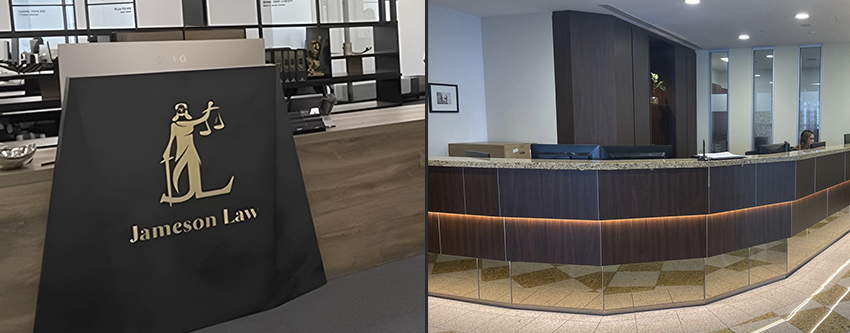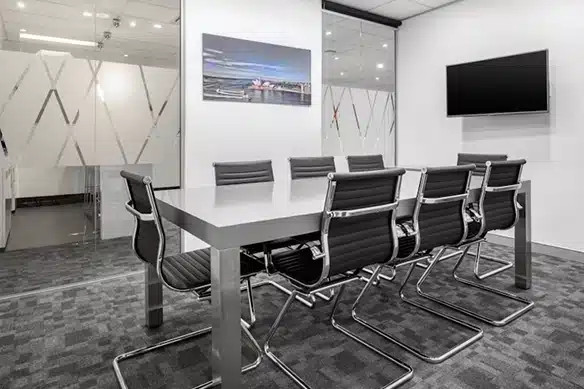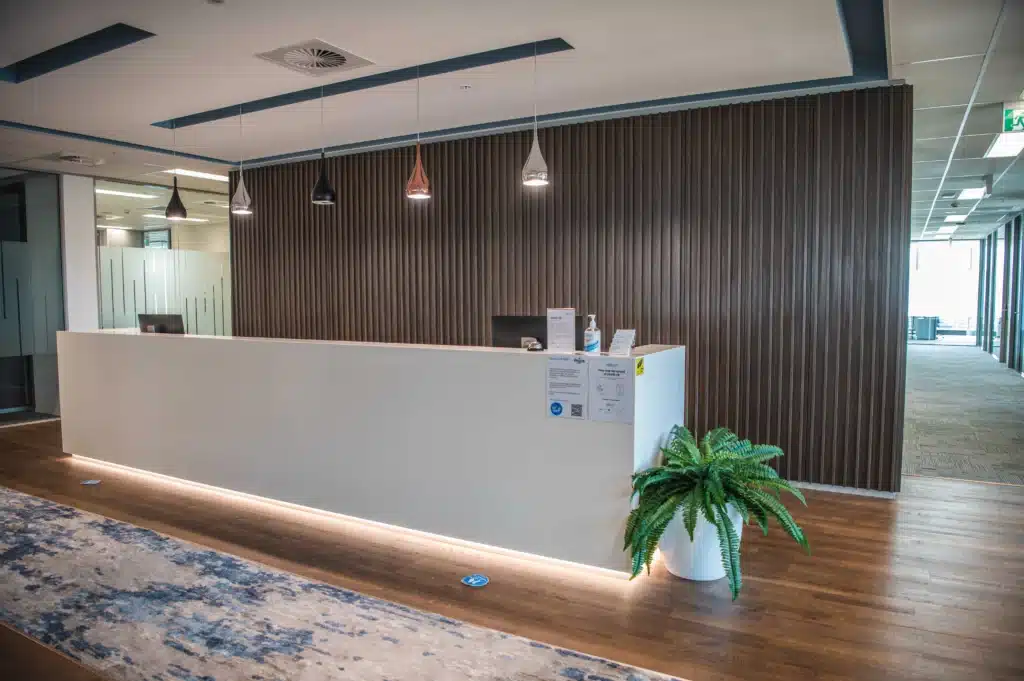Australia’s permanent residency pathway attracts over 160,000 skilled migrants annually through its points-based immigration system. Understanding Australia PR visa requirements can mean the difference between approval and rejection.
We at Jameson Law break down the essential criteria, application processes, and strategic pathways that lead to successful permanent residency outcomes.
What Points Do You Need for Australia PR
Australia’s General Skilled Migration program operates on a competitive points-based system where the minimum threshold sits at 65 points, but reality demands much higher scores. Recent invitation rounds through SkillSelect show successful applicants typically score 85-95 points, with some occupations requiring 100+ points due to intense competition.
Points Allocation Across Eight Categories
The Department of Home Affairs awards points across eight distinct categories. Age provides the highest single allocation (maximum 30 points for ages 25-32), while English proficiency offers up to 20 points. Skilled employment contributes points based on years of experience, and educational qualifications award 20 points for doctorate holders.
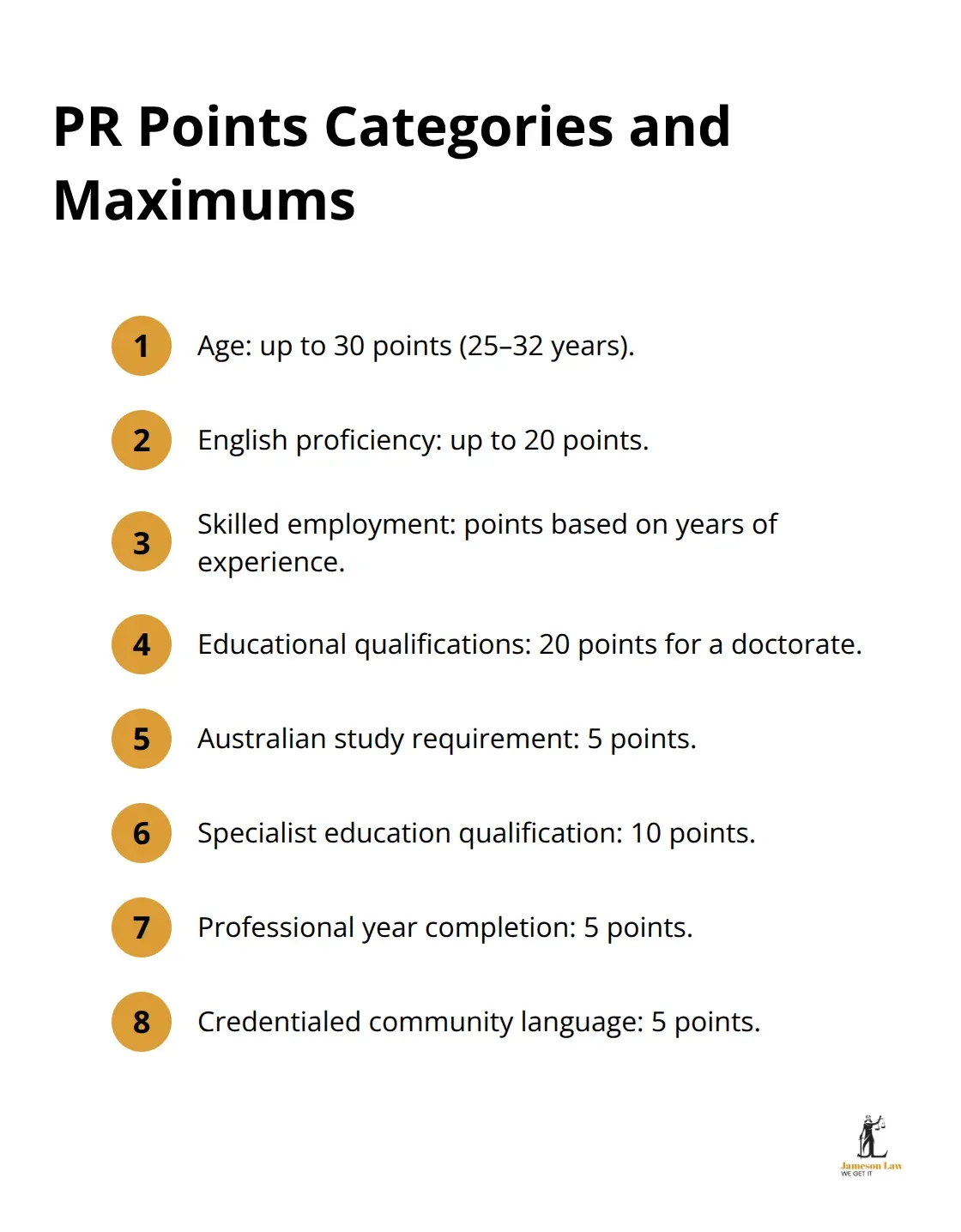
Additional categories include Australian study requirements (5 points), specialist education qualification (10 points), professional year completion (5 points), and credentialed community language skills (5 points).
Occupation Lists Drive Eligibility
Your occupation must appear on either the Medium and Long-term Strategic Skills List or Short-term Skilled Occupation List to qualify for skilled migration visas. The MLTSSL contains 212 occupations including software engineers, registered nurses, and accountants, while the STSOL covers 427 occupations primarily for employer-sponsored visas. Engineers consistently receive priority processing, with civil engineers averaging 70-day processing times compared to 12-month waits for accountants.
Skills Assessment Requirements
Skills assessments from designated authorities like Engineers Australia or VETASSESS cost between 500-1,500 AUD and take 12-20 weeks to complete. These assessments validate your qualifications and work experience against Australian standards. Each occupation has specific assessment criteria that applicants must meet before submitting their Expression of Interest.
English Standards Set High Bars
Competent English requires IELTS scores of 6.0 in each band, but superior English provides additional points to your application. PTE Academic and TOEFL iBT serve as alternatives with equivalent score requirements. Department of Home Affairs data shows applicants with superior English achieve 40% higher invitation rates than those meeting minimum standards. Test results remain valid for three years, and retaking tests costs 330-395 AUD per attempt.
State and territory nomination programs offer additional pathways that can boost your chances of receiving an invitation to apply for permanent residency.
How Do State Nominations Boost Your PR Chances
State and territory nomination programs transform impossible applications into successful outcomes by adding 5-15 extra points and providing alternative pathways for in-demand occupations. New South Wales processed 47,000 nominations in 2024, while Victoria approved 41,000 applications. These programs remain competitive but achievable with proper targeting.
Queensland prioritises healthcare workers and engineers, offering 190 visa nominations to registered nurses within 2-4 weeks compared to 8-month federal processing times. Western Australia fast-tracks mining engineers and construction managers through its Graduate stream, requiring only 12 months local work experience versus the standard 3-year requirement for federal applications.
Regional Visas Offer Faster Processing
Regional migration through the 491 visa provides 15 points plus priority processing, with South Australia approving 85% of eligible applicants within 6 weeks. Tasmania requires no job offer for ICT professionals, while Northern Territory accepts applications from any occupation on their priority list without points competition.
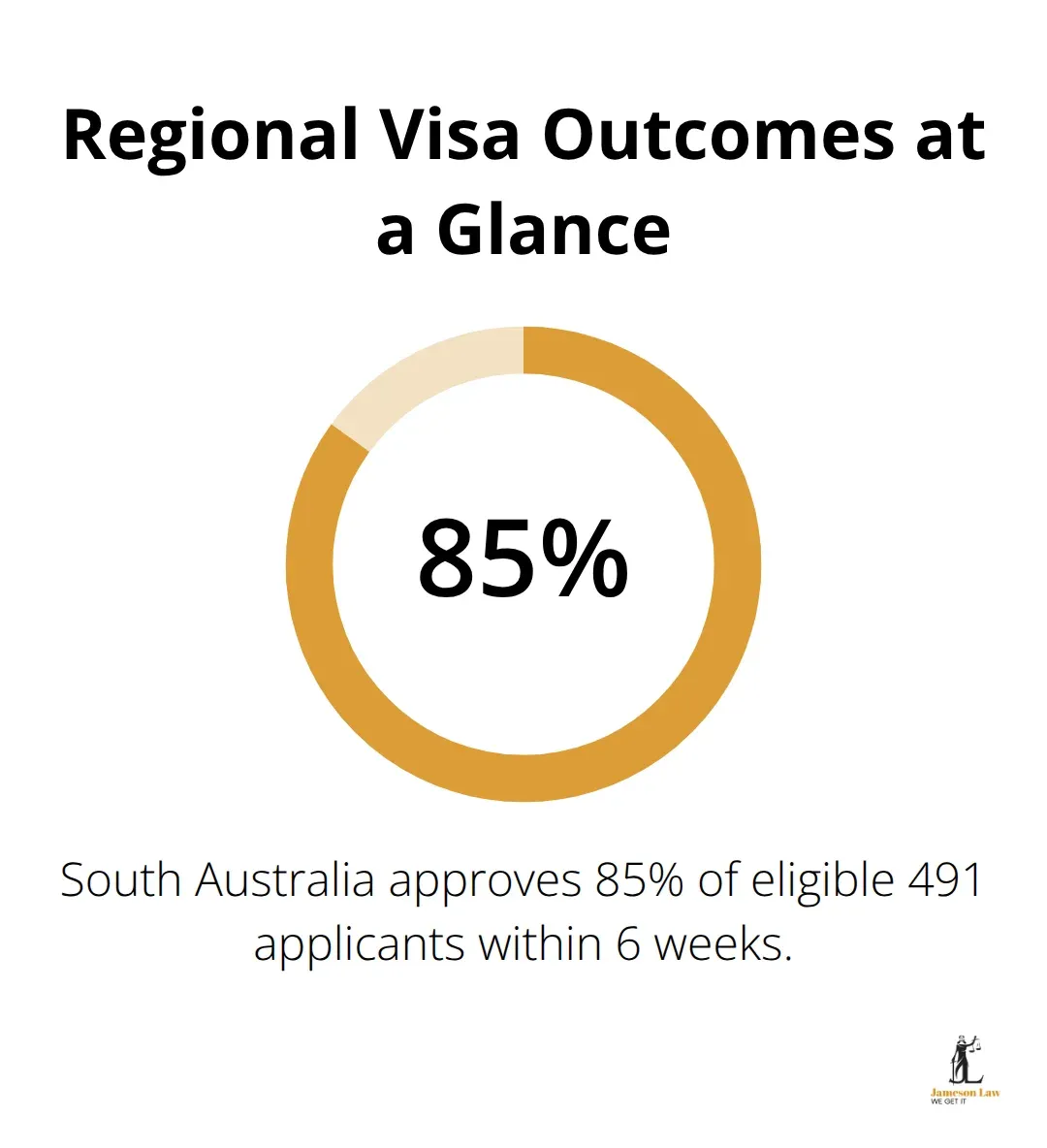
Regional areas include cities like Newcastle, Wollongong, and Geelong (not just remote locations). After 3 years in regional areas, 491 holders transition to permanent residency through the 191 visa, which allows people who have lived and worked in designated regional areas to live and work in Australia permanently. Regional minimum salary thresholds sit at 53,900 AUD annually, significantly lower than metropolitan requirements.
Investment Programs Target High Net Worth Individuals
Business Innovation and Investment visas require minimum investments of 1.25 million AUD for the 188B stream, with South Australia and Queensland leading approvals at 78% success rates. The Significant Investor stream demands 5 million AUD investment but guarantees permanent residency within 4 years.
Victoria suspended its business migration program in 2024, redirecting applicants to other states. Investment visa holders must maintain their investments for 4 years and demonstrate genuine commitment to Australian business development through annual reporting requirements.
Understanding these nomination pathways helps applicants choose the right strategy, but success depends heavily on proper documentation and meeting strict application requirements. Staying informed about latest changes in Australian immigration ensures your application aligns with current policies and maximises approval chances.
How Do You Navigate the PR Application Process
The Expression of Interest submission through SkillSelect marks the start of your permanent residency journey, but most applicants underestimate the complexity and time required. SkillSelect operates as a pre-application system where you submit your EOI with your points score, occupation, and preferred visa subclass. The Department of Home Affairs then ranks all EOIs and issues invitations during monthly rounds. The highest ranked EOI, by points score, will be invited to apply for their visa before an EOI with a lower points score, which demonstrates the competitive nature of the system.
Document Preparation Takes Months Not Weeks
Required documentation demands 3-6 months of preparation for most applicants. Skills assessments alone consume 12-20 weeks, while police clearances from multiple countries can take 8-16 weeks each. The Department requires certified translations for all non-English documents through NAATI-certified translators. Work reference letters must include specific details about duties performed, employment dates, salary information, and supervisor contact details. Educational transcripts need academic verification through organisations like World Education Services (adding another 6-8 weeks to your timeline). Health examinations through approved panel physicians cost 300-500 AUD per person and remain valid for 12 months.
Character Assessments Require Global Documentation
Character assessments require police checks from every country where you lived for 12+ months since age 16. Some countries like India take up to 20 weeks for clearance, while others process applications within 4-6 weeks. Each police check costs between 50-150 AUD depending on the issuing country. Applicants must obtain these documents while they remain current, as most expire within 12 months of issue.
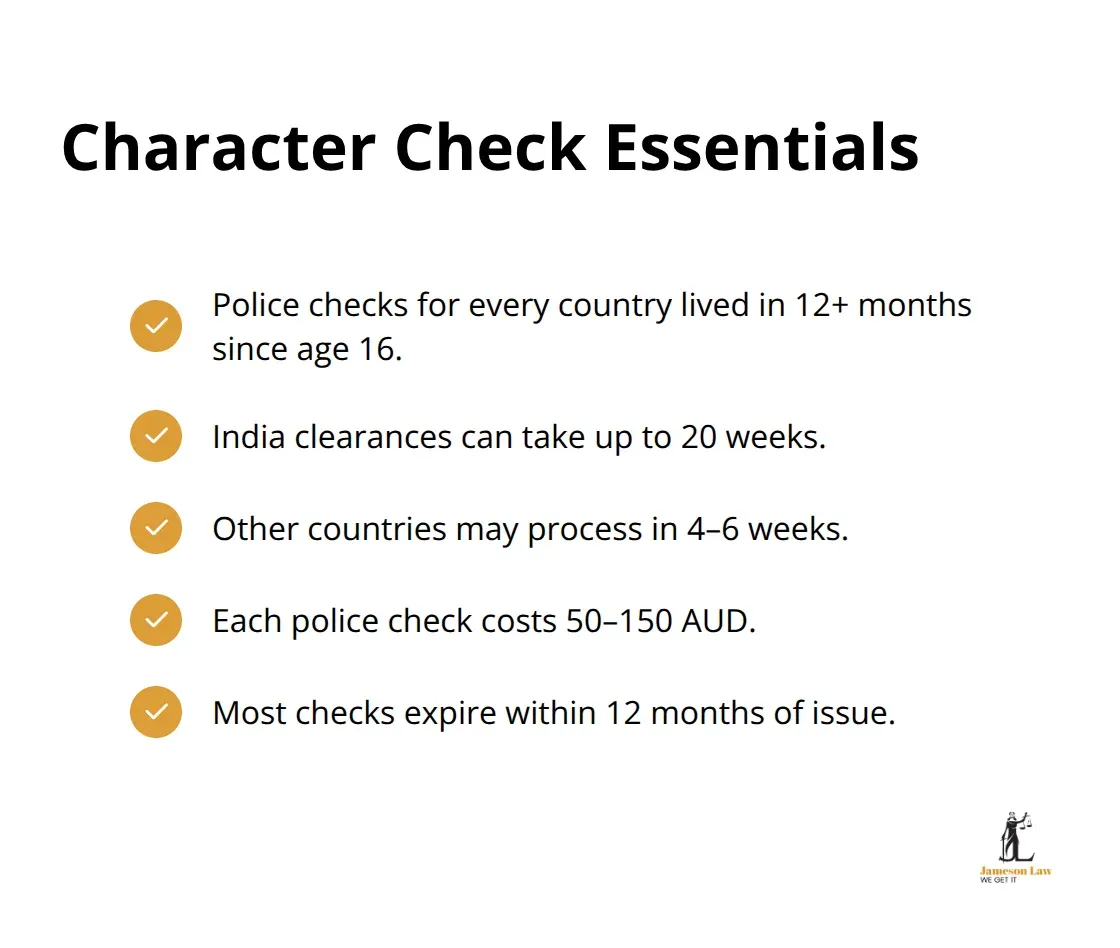
Processing Times and Fees Vary Dramatically
Visa application charges increased significantly, with Subclass 189 visas now requiring substantial investment for the primary applicant plus additional costs for each family member. Processing times fluctuate based on occupation demand and application completeness, with applications processed within varying timeframes according to Department of Home Affairs data. Engineers and healthcare professionals experience faster processing, while accountants and IT professionals face longer delays. Incomplete applications trigger requests for additional information, which extends processing and requires immediate response within 28 days to avoid refusal.
Final Thoughts
Australia PR visa requirements demand strategic preparation and meticulous attention to detail across multiple pathways. The points-based system requires 85-95 points for competitive success, while state nominations provide alternative routes through regional programs and investment streams. Documentation preparation spans 3-6 months, with skills assessments, police clearances, and health examinations that require careful coordination.
Professional immigration assistance becomes invaluable when you navigate occupation-specific requirements, state nomination criteria, and policy changes. Complex cases that involve multiple countries, business investments, or regional commitments benefit significantly from expert guidance to avoid costly delays or refusals. The Department of Home Affairs processes applications more efficiently when documentation meets exact specifications (reducing processing delays by up to 40%).
You must take immediate action on skills assessments and English tests, as these foundational elements determine your pathway options. These assessments form the backbone of any successful application and often create the longest delays in your timeline. We at Jameson Law provide comprehensive immigration support to help you navigate the permanent residency process through strategic application planning and expert documentation review.









